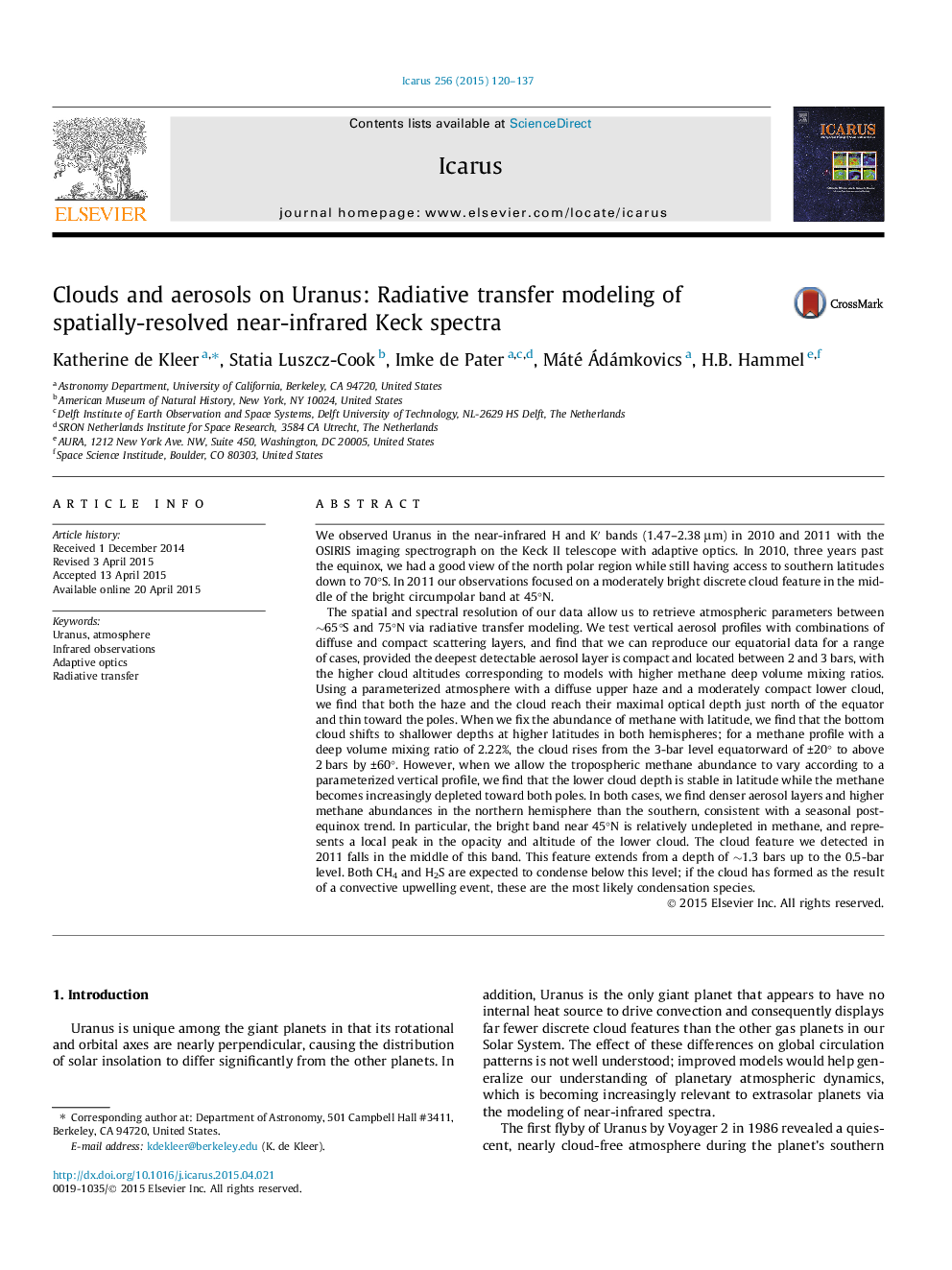| Article ID | Journal | Published Year | Pages | File Type |
|---|---|---|---|---|
| 1773042 | Icarus | 2015 | 18 Pages |
Abstract
The spatial and spectral resolution of our data allow us to retrieve atmospheric parameters between â¼65°S and 75°N via radiative transfer modeling. We test vertical aerosol profiles with combinations of diffuse and compact scattering layers, and find that we can reproduce our equatorial data for a range of cases, provided the deepest detectable aerosol layer is compact and located between 2 and 3 bars, with the higher cloud altitudes corresponding to models with higher methane deep volume mixing ratios. Using a parameterized atmosphere with a diffuse upper haze and a moderately compact lower cloud, we find that both the haze and the cloud reach their maximal optical depth just north of the equator and thin toward the poles. When we fix the abundance of methane with latitude, we find that the bottom cloud shifts to shallower depths at higher latitudes in both hemispheres; for a methane profile with a deep volume mixing ratio of 2.22%, the cloud rises from the 3-bar level equatorward of ±20° to above 2 bars by ±60°. However, when we allow the tropospheric methane abundance to vary according to a parameterized vertical profile, we find that the lower cloud depth is stable in latitude while the methane becomes increasingly depleted toward both poles. In both cases, we find denser aerosol layers and higher methane abundances in the northern hemisphere than the southern, consistent with a seasonal post-equinox trend. In particular, the bright band near 45°N is relatively undepleted in methane, and represents a local peak in the opacity and altitude of the lower cloud. The cloud feature we detected in 2011 falls in the middle of this band. This feature extends from a depth of â¼1.3 bars up to the 0.5-bar level. Both CH4 and H2S are expected to condense below this level; if the cloud has formed as the result of a convective upwelling event, these are the most likely condensation species.
Related Topics
Physical Sciences and Engineering
Earth and Planetary Sciences
Space and Planetary Science
Authors
Katherine de Kleer, Statia Luszcz-Cook, Imke de Pater, Máté Ádámkovics, H.B. Hammel,
